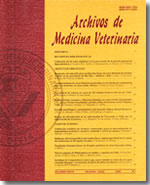Campylobacter: fluoroquinolone resistance in Latin-American countries
Main Article Content
Abstract
Campylobacter jejuni and C. coli are zoonotic bacteria recognised as a major cause of human gastroenteritis and frequent cause of bacterial food-borne illness around the world. A great variety of food-producing animals, especially poultry are important reservoir involved in their spread to humans. Campylobactergastroenteritis is generally a self-limiting disease avoiding antimicrobial prescription but, when antibiotic therapy is indicated, erythromycin and fluoroquinolone are the drugs of choice. However, Campylobacter has become increasingly resistant to fluoroquinolones with high isolation rates among human and animal strains. This review shows and discusses the data generated in Latin America in relation to fluoroquinolone resistance in Campylobacterhighlighting that i) fluorquinolone resistant strains are reported with high frequencies in several countries; ii) the available data allows to confirm that human infection by fluoroquinolone-resistant Campylobacter are originated mainly from the food chain animals and environmental sources; iii) Campylobacter isolation, identification and antimicrobial susceptibility testing have been performed with different analytical methods making necessary the harmonisation and standardisation of diagnostic methods and iv) strengthening Campylobacter antimicrobial resistance surveillance programs and capacity building with the association between public health services and the academic world are necessary.

